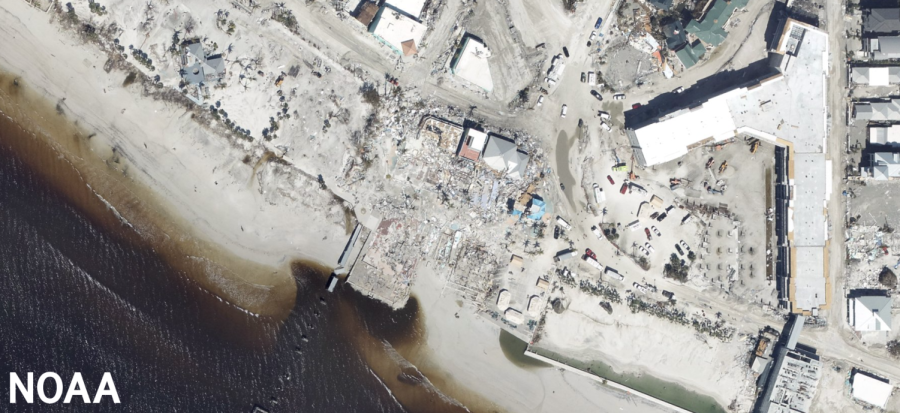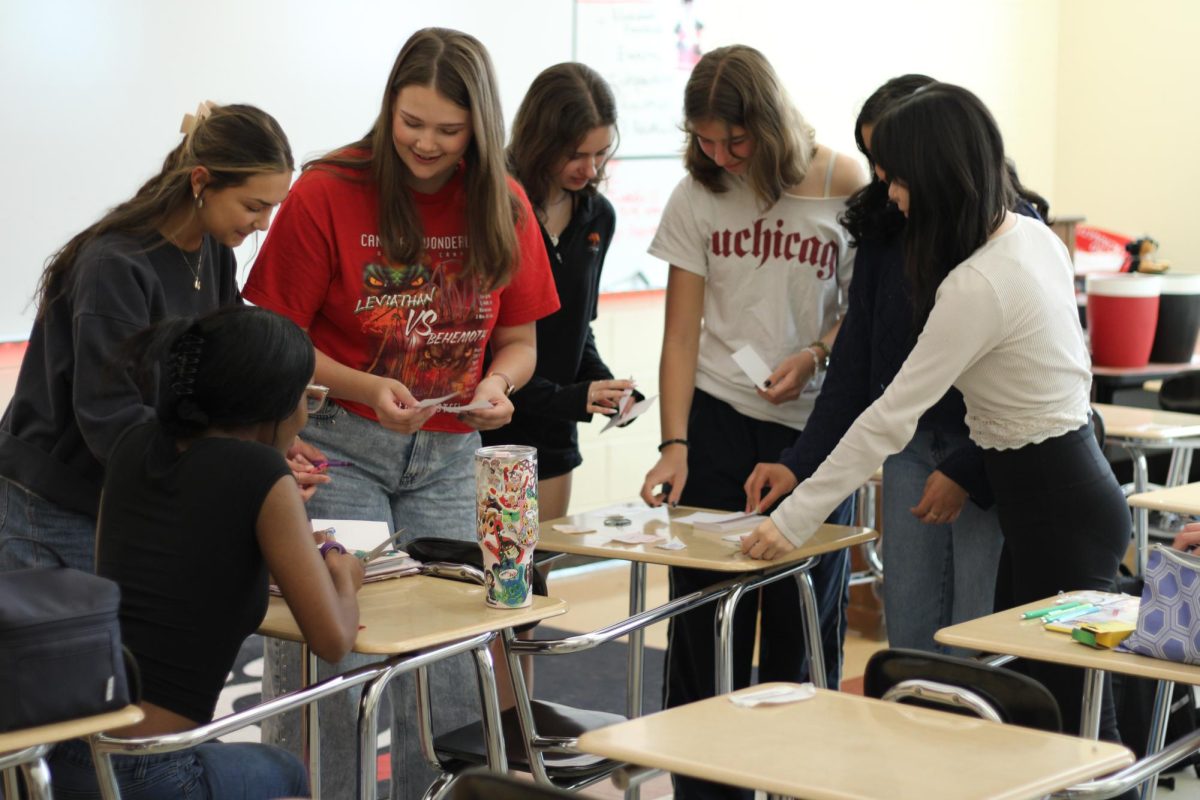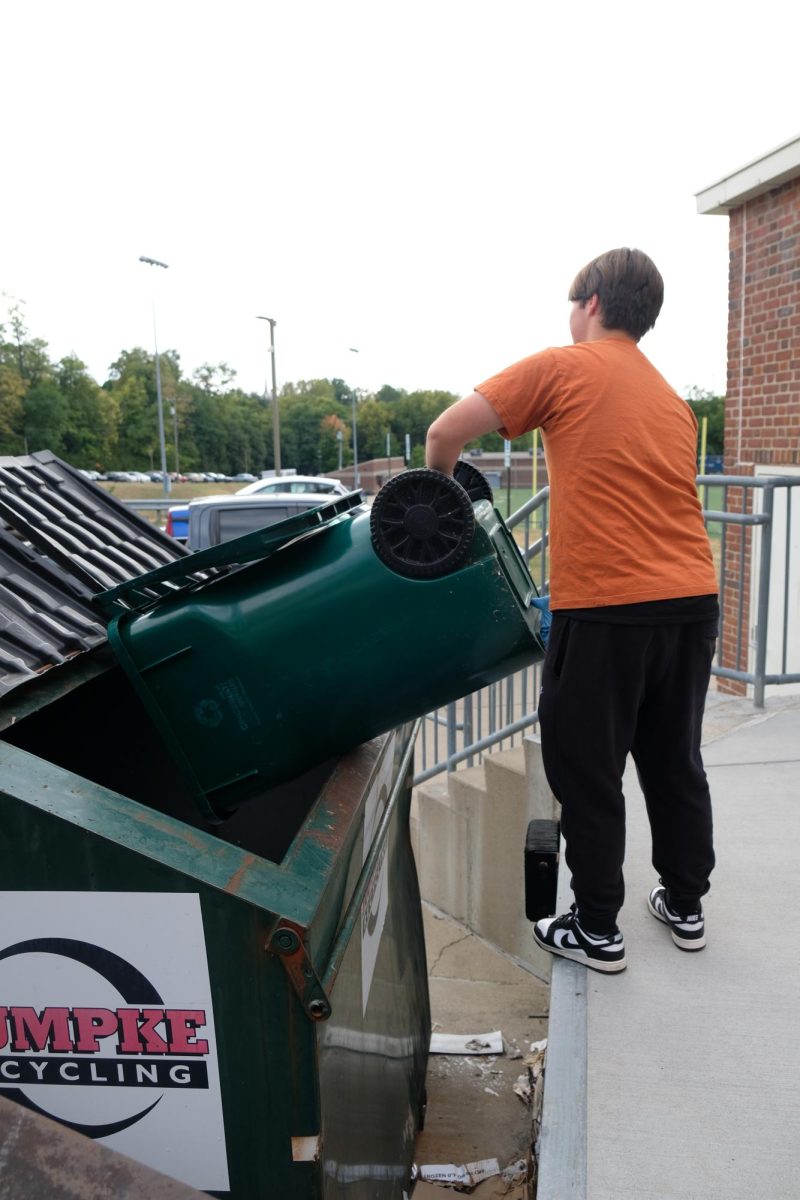It’s wind, it’s rain, it’s a hurricane!
A recap of the recent Hurricane Ian and how Floridians have been recovering
Used with permission from the National Oceanic and Atmospheric Administration (NOAA).
Aerial imagery of damage in the Times Square district of Fort Myers Beach, Fla., after Category 4 Hurricane Ian struck the area.
October 31, 2022
The most recent hurricane in the U.S., Hurricane Ian, has devastated Florida, killing over 100 people and leaving more than 2.3 million without power.
Hurricane Ian, a Category 4 storm at its peak, recently slammed into Florida on Sept. 28. According to the National Hurricane Center, Hurricane Ian had reached winds speeds up to 150 mph, tieing for the fifth strongest hurricane to ever make landfall in the U.S. Many buildings were destroyed and many homes were damaged, including the homes of some relatives of WHHS students.
“[My grandparents’] car roof was torn off, [and] their boat on the canal in Ft. Myers is gone,” Elijah Auciello, ’27 said. Auciello’s grandparents evacuated to Ohio prior to the hurricane and didn’t suffer any injuries.
However, many relatives of WHHS students that live in Florida are elderly, and some have a hard time moving, going downstairs or evacuating.
“My grandma is 85, so she can’t go downstairs,” Ezio Bloland, ‘28 said. “Her apartment building’s garage flooded which destroyed a few cars and the elevator in the building is broken.” Bloland’s grandma, who stayed in her apartment during the hurricane, did not suffer any injuries.
To prepare for such a disaster, the Federal Emergency Management Agency (FEMA) advised local residents to collect several days’ supply of food, water, flashlights with extra batteries, a first aid kit, a whistle, local maps and an alternate way to power a radio or cell phone to stay updated. FEMA also advised people to take inventory of the items that required electricity so then they would know what would need backup power.
“My relatives were well-informed and left a week before Hurricane Ian hit,” Joshua Cholak, ‘24 said. “They took what they thought they needed and evacuated.”
1,600 Floridians have still found themselves in 11 Red Cross shelters after the hurricane hit as of Oct 10. The Red Cross has been aiding in the recovery, and they have live statistics on their website. Also, FEMA and the State of Florida opened the first Disaster Recovery Center in Fort Myers, Florida, which allows survivors to access and register for disaster assistance. However, weeks later, parts of Florida are still recovering from Hurricane Ian, but a lot has already been done.
“Teams came from across the Federal government and included skilled rescuers from FEMA Urban Search and Rescue task forces, the U.S. Coast Guard, the Department of Defense, Customs and Border Protection, the Department of the Interior and state and local responders,” the White House Briefing Room wrote on their website. “Together, they have rescued more than 3,800 people and 200 pets.”







